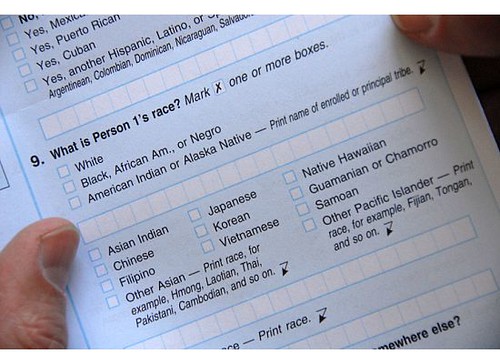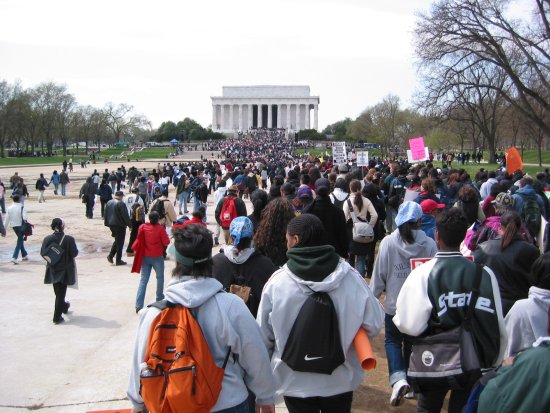by Amanda Powers
In 2008, Abigail Fisher applied to the University of Texas at Austin and was rejected. She claims that she was rejected because she is white. Fisher sued the university, and her case is now being considered by the Supreme Court.
She ended up attending Louisiana State University and has since graduated from law school. However, she has sparked a national conversation over the use of race-based affirmative action in college admissions. Is this system working? Is it harming white students? What is the value of having a diverse student body? Should admissions officers focus on class rather than wealth? Is race-based affirmative action still necessary at all?
The affirmative action debate has coincided with the explosion of racial tensions on college campuses nationwide this year. Some argue that affirmative action is needed to provide opportunities for students of color, to create a diverse student body, and to allow students to learn from those of different backgrounds. Others, like Fisher, believe that it is taking spots away from qualified white students. And some say that affirmative action should be based on socio economic class rather than race.
race.
Race-based affirmative action was created to develop diverse student bodies on college campuses, and to open up new opportunities for minority students. Much of the debate today is over whether or not students of color still need or deserve different treatment. Abigail Fisher would argue that we live in a colorblind society, and that giving opportunities to students of color is essentially taking those opportunities away from white students. However, others would argue this special treatment is no different from giving preference to legacies, athletes, or geographically diverse students and that it is impossible to ignore the racial inequality still present in our country.
Recently, as part of my work with a nonprofit that promotes social activism among Boston youth, I led a workshop on racial justice for a group of students, ranging from eighth grade through college. One of the first activities we did was called “Stand Up Sit Down,” in which one of my co-leaders read a prompt, such as “stand up if you think the Civil Rights movement ended racism,” or, “stand up if you have ever made a joke about race.”
Another prompt was, “stand up if you think affirmative action is necessary to make education equal.” About two-thirds of the group stood up. Afterwards, I asked all of the students to talk about why they reacted the way that they did. (For the purpose of this article, all of these students wished to remain anonymous.)

A student at American University, who is African-American, says that she stood up for affirmative action during the workshop because, “I honestly don’t get arguments against a process that gives a chance for people of color to go to schools where the system has designed disproportionate advantages to white students to ensure their success and acceptance into college.” Her views are reflected in statistics about the racial divide evident in performance on the SAT. Many argue that this test, which is a major factor in college admissions, reflects race rather than academic performance. While white students average a score of 1576 on this test, black students achieve an average of only 1277. A higher SAT score, which is clearly more common among white students, gives those students an advantage in the college admissions process. The American University student makes the argument that race-based affirmative action is a way to level the playing field among many other aspects of the admissions process that directly benefit white students and harm students of color. Lee Bollinger, currently president of Columbia University, and previously president of the University of Michigan when it was sued in a case similar to Fisher’s over its affirmative action policy, agrees with this student’s view. In a speech at a symposium on “Education and Law” in response to critics of race-based affirmative action, he said, “What is the reality that we are trying to address in our society, including at colleges and universities trying to build diverse student bodies? It really is trying to overcome two centuries of legacies of discrimination and active disempowerment and wealth transfer.”
However, others, including some students of color, are in opposition to the way that affirmative action policies are currently being put into practice. A student at Cambridge Rindge and Latin School, who is a Black Lives Matter activist and is African-American herself, said, “I sat down because I don’t think that the way affirmative action is being implemented today is benefitting those who need it the most and that there are other ways to make education much more equal than affirmative action.” This view is not uncommon: many people argue that affirmative action should be based on socioeconomic class rather than race.

Advocates of affirmative action march in Washington, D.C.
A Newton North student, who is white, stood up during the workshop. She said, “I think that affirmative action can be a great way to level the playing field for students who have had less opportunity. It can give students a chance to succeed and recognizes challenges that minority students face.” However, at the same time, she explained, “affirmative action can be difficult because it often categorizes people by race alone and can fail to recognize privilege in other aspects of students’ identity.” This student recognizes concerns about economic inequality, but she is still supportive of the system of affirmative action as a whole.
I also spoke about Fisher’s case with Dr. Alane Shanks, who wrote her dissertation on the start of affirmative action at Harvard Medical School, and who has devoted her career to promoting diversity on college campuses. Shanks supports race-based affirmative action completely. But even Dr. Shanks—who said, “I think it’s very dangerous to take away affirmative action; it is working and improving access to higher education”—admits to having some qualms about the current system not reaching enough people and there needing to be other efforts besides affirmative action.
Sheryll Cashin, Georgetown University law professor and author of Place not Race: A New Vision of Opportunity in America, writes that current affirmative action policies, “create optical blackness but little socio economic diversity.” In reviewing Professor Cashin’s book, Richard Kahlenberg, a senior fellow at the Century Foundation, references Cashin’s point that the achievement gap by income is twice the size of the achievement gap by race.
Following a 2003 Supreme Court case on affirmative action at the University of Michigan, many states, including Michigan, Texas, and California, have attempted to eradicate this issue by banning race-based affirmative action at their public universities. Because they can no longer use race in admissions, many universities have begun focusing on economic rather than racial diversity, and have created policies designed to narrow the socio-economic achievement gap. After race-based affirmative action was banned in Texas, public universities in the state began using a program called the “Top 10 Percent” plan, which guarantees admission to the students with the highest grades at every public school in the state, usually amounting to approximately 10 percent of students statewide. Students admitted through this program make up three-quarters of the incoming class. This program brings in more low income students, making the student body more economically diverse. Because applicants from every single high school are admitted, students from lower income backgrounds naturally become a part of the student body. The remaining quarter of the class is admitted in a more holistic manner, after a review of many other factors.
Some studies show that although there was an initial drop in students of color attending public universities in states where affirmative action was banned, the population rebounded and even exceeded the levels before the ban. Dr. Shanks was skeptical about these studies, saying, “If you look at the numbers of what’s really happened in all of those places, there’s been a big decline of students of color actually having access… because the number of people of color in the demographics overall in the United States has gone up, it makes the numbers look like they’re not as bad now as they were before… it’s not that it’s working; if you look at the actual percentage of student body, the percentage of students of color compared to the number of students in higher education has dropped, even if the enrollment numbers themselves have increased.” For example, officials from the University of Michigan stated that minority enrollment dropped significantly after race-based affirmative action was banned in their state, in a brief filed in Abigail Fisher’s Supreme Court case.
 The Top Ten Percent Plan was in effect when Abigail Fisher applied to the University of Texas at Austin, but she did not qualify academically for automatic acceptance. She claims that although she did not qualify based on the program’s academic standards, she still was more deserving of acceptance than some minority students who were accepted. Lillian, a Tufts student, spoke to this very prevalent attitude towards affirmative action. When describing her high school experience in “an affluent, predominantly white neighborhood,” she said, “I had a lot of friends who would complain about affirmative action because they felt it cheated them of a spot at some ‘elite’ university.” She said that until she got to college and learned about “systematic oppression,” she felt the same way.
The Top Ten Percent Plan was in effect when Abigail Fisher applied to the University of Texas at Austin, but she did not qualify academically for automatic acceptance. She claims that although she did not qualify based on the program’s academic standards, she still was more deserving of acceptance than some minority students who were accepted. Lillian, a Tufts student, spoke to this very prevalent attitude towards affirmative action. When describing her high school experience in “an affluent, predominantly white neighborhood,” she said, “I had a lot of friends who would complain about affirmative action because they felt it cheated them of a spot at some ‘elite’ university.” She said that until she got to college and learned about “systematic oppression,” she felt the same way.
In response to the argument that affirmative action takes spots away from white students like Fisher, Dr. Shanks said, “It’s like saying, ‘if only there wasn’t a handicapped parking space I’d have found a parking space, like the three handicapped parking spaces are the ones that would’ve allowed me to park.’ So I think it’s such a minimal amount. If there was anything I could change, I would say add more spots rather than less.”
Dr. Shanks also discussed the way that racial diversity is valuable to these institutions, and not just its impact on minority students. She said, “there’s a way to see this [diversity] as asset-based; that bringing different ethnic and racial groups adds to the breadth and depth of the learning community” In a homogeneous community, it is difficult from more than one perspective to be present. Diversity is important and necessary in our higher education system to ensure that students are exposed to varied perspectives and that they can utilize those different perspectives when they are called upon to solve problems.
Race is still extremely relevant in American society. Just this year, police brutality towards black men incited of the Black Lives Matter movement. Racist acts on college campuses have led to outrage and protest. At a Yale fraternity party, a member was reported to have turned away all students of color, saying the party was for “white girls only.” At Harvard Law School, portraits of black law professors were vandalized. At the University of Missouri, protests broke out after a series of racial incidents, including the use of harmful racist slurs, and what students felt was an inadequate response from the administration. As the debate over affirmative action plays out, colleges are trying to figure out how to address the issue of race.
Whether or not race-based preferences are struck down by the Supreme Court, race remains an important issue on college campuses and in  American society. Bringing together people with different identities and backgrounds, whether they are diverse in terms of race, class, gender, sexual orientation, geographic location, educational background, or any other factor, is important and necessary in any community.
American society. Bringing together people with different identities and backgrounds, whether they are diverse in terms of race, class, gender, sexual orientation, geographic location, educational background, or any other factor, is important and necessary in any community.
In the workshop I facilitated a few weeks ago, participants came from a variety of different backgrounds, and so they each brought a unique perspective to our conversations. Similarly, a diverse student body means that each student brings their unique background and experience to a college campus. Colleges and universities have a responsibility to ensure and promote diversity, in all aspects of student identities, on their campuses.
Whether or not the Supreme Court strikes down race based affirmative action, it is undeniable that diversity is beneficial to any community and that race is still extremely relevant in America today.









































